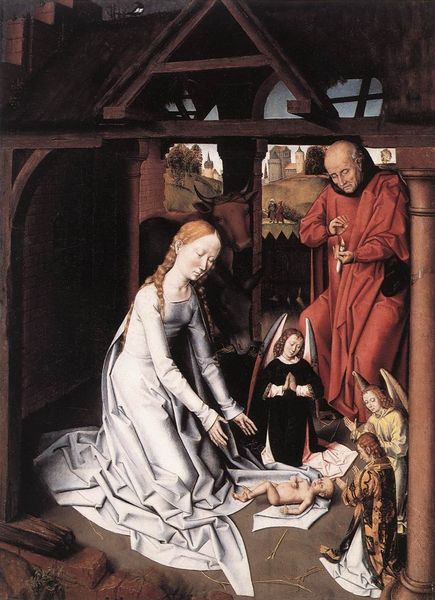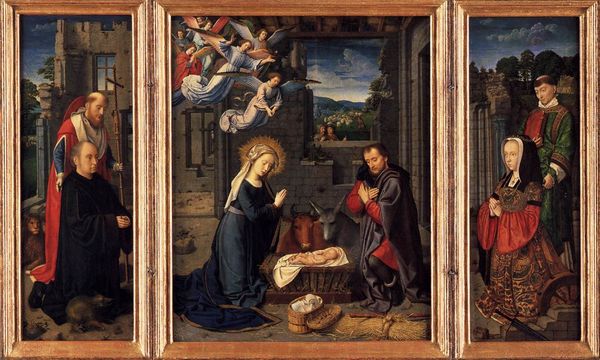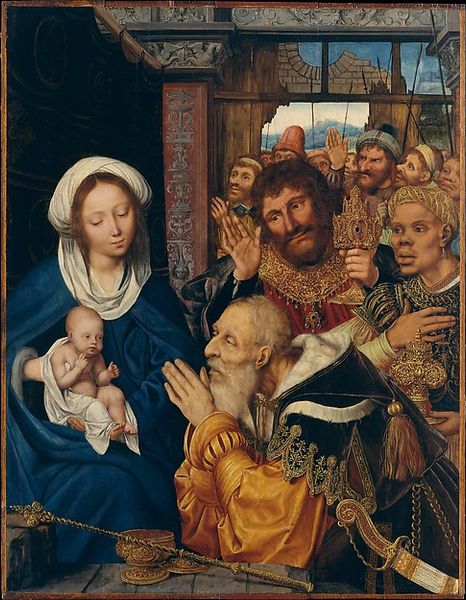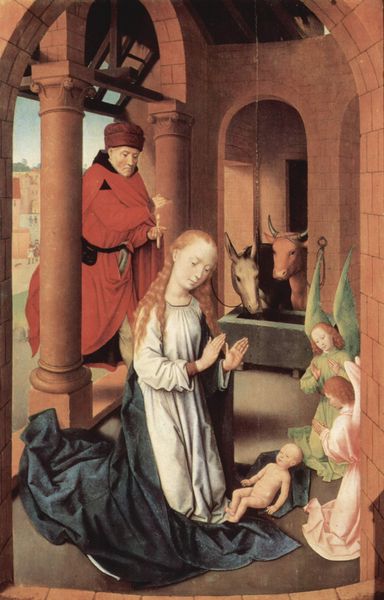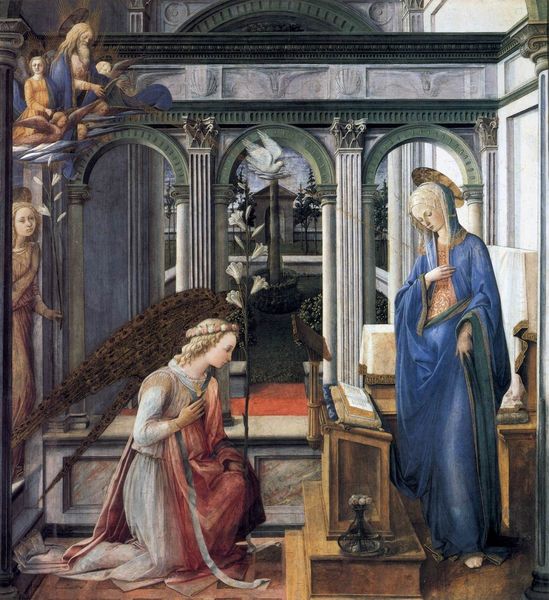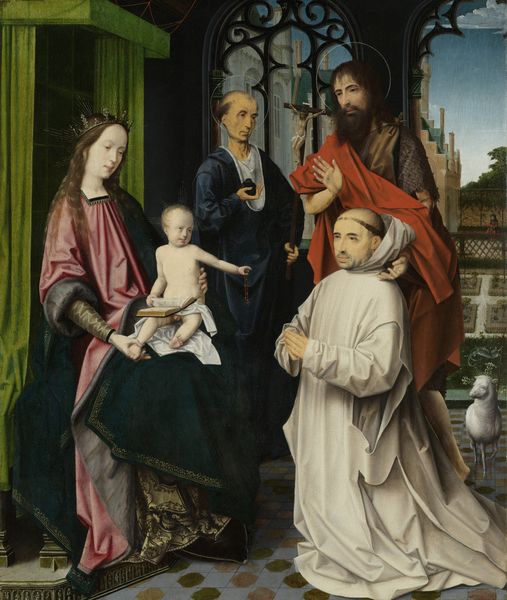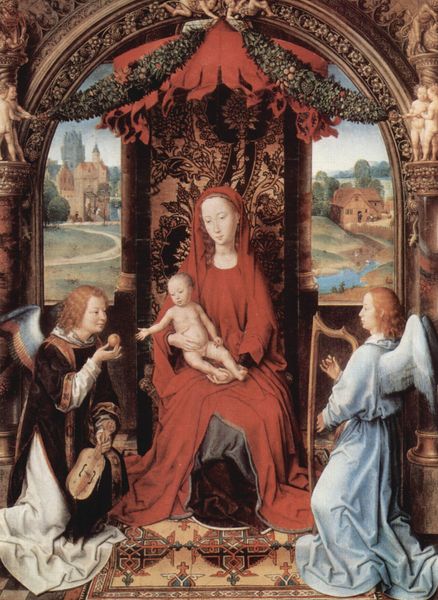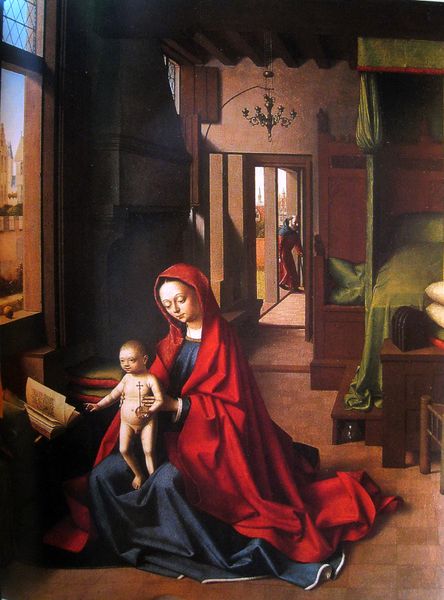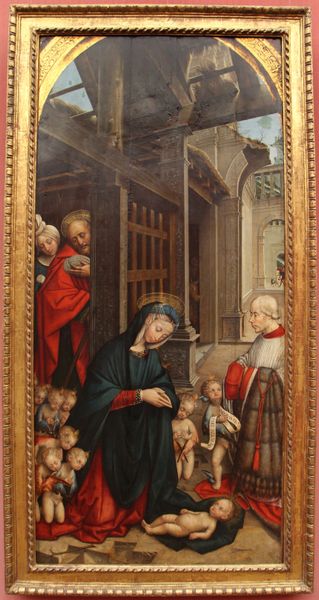
panel, painting, oil-paint
#
portrait
#
panel
#
allegory
#
narrative-art
#
painting
#
oil-paint
#
figuration
#
history-painting
#
northern-renaissance
#
early-renaissance
#
mixed media
#
miniature
Copyright: Public domain
Editor: This panel painting, titled *Nativity*, was created around 1435 by Jacques Daret. It feels very dreamlike and surreal. I’m drawn to the artist’s unique treatment of light and shadow and this divine event occurring in a very humble and imperfect place. What stands out to you in this piece? Curator: It is fascinating how Daret uses specific symbolic languages in the details, isn’t it? Light, here represented by these dynamic rays, traditionally signifies divine presence and revelation. In the cultural memory, it goes beyond just illumination. Note how these rays seem very deliberate, almost like golden threads. Editor: Like they’re connecting Heaven and Earth? Curator: Exactly! That imagery underscores the direct link between the divine and the earthly realm, collapsing distance, right? Notice also how, compositionally, it centers our attention, inviting meditation. Have you observed anything unusual in the setting or placement? Editor: The stable looks...dilapidated. Almost like a ruin, which seems odd for such a sacred event. And some of the figures appear...out of place? Curator: The ruin is loaded with meaning. It symbolizes the Old Covenant being replaced by the New. It tells a story of religious transformation and renewal in one visual punch. As for the figures, consider their gestures, expressions, and attire. The divine meeting the mundane, or the timeless clashing with the contemporary. It almost evokes a timeless dream, doesn’t it? Editor: I see it now! This painting uses recognizable elements of religious iconography in such a clever way to say something complex about the meeting of human and divine worlds. Curator: It is precisely this rich symbolic interplay that reveals a collective cultural narrative—one continuously evolving over time. It offers us insights into historical memory, as well as the psychological significance embedded in seemingly simple visuals.
Comments
No comments
Be the first to comment and join the conversation on the ultimate creative platform.
